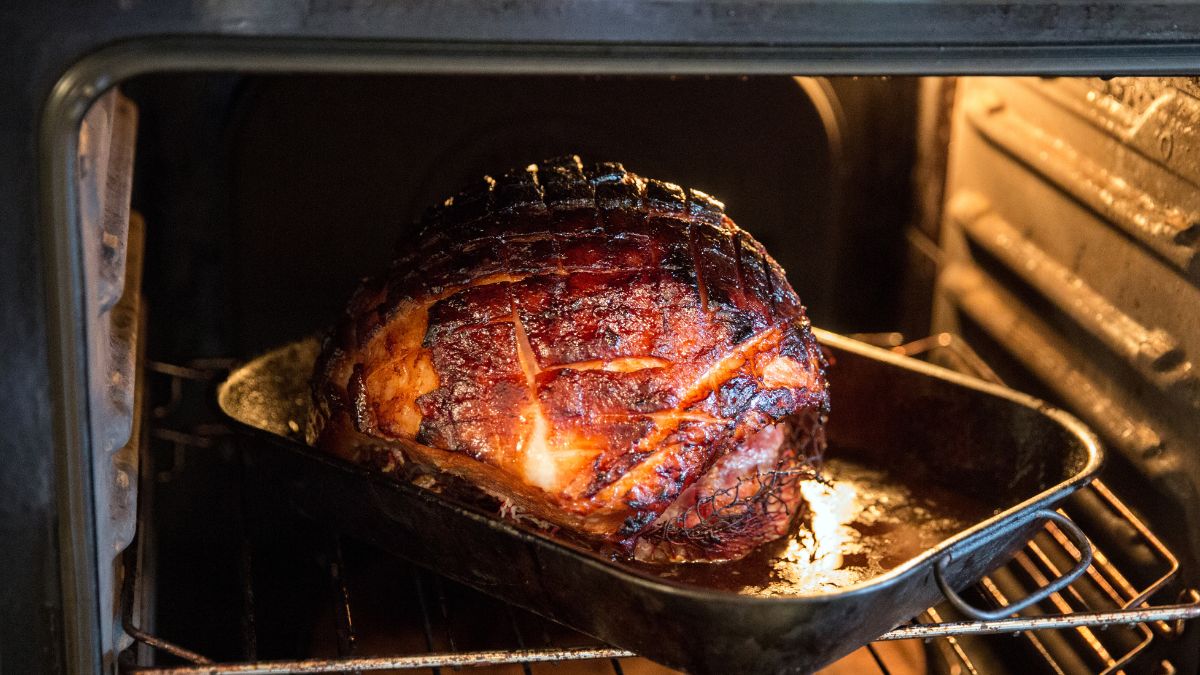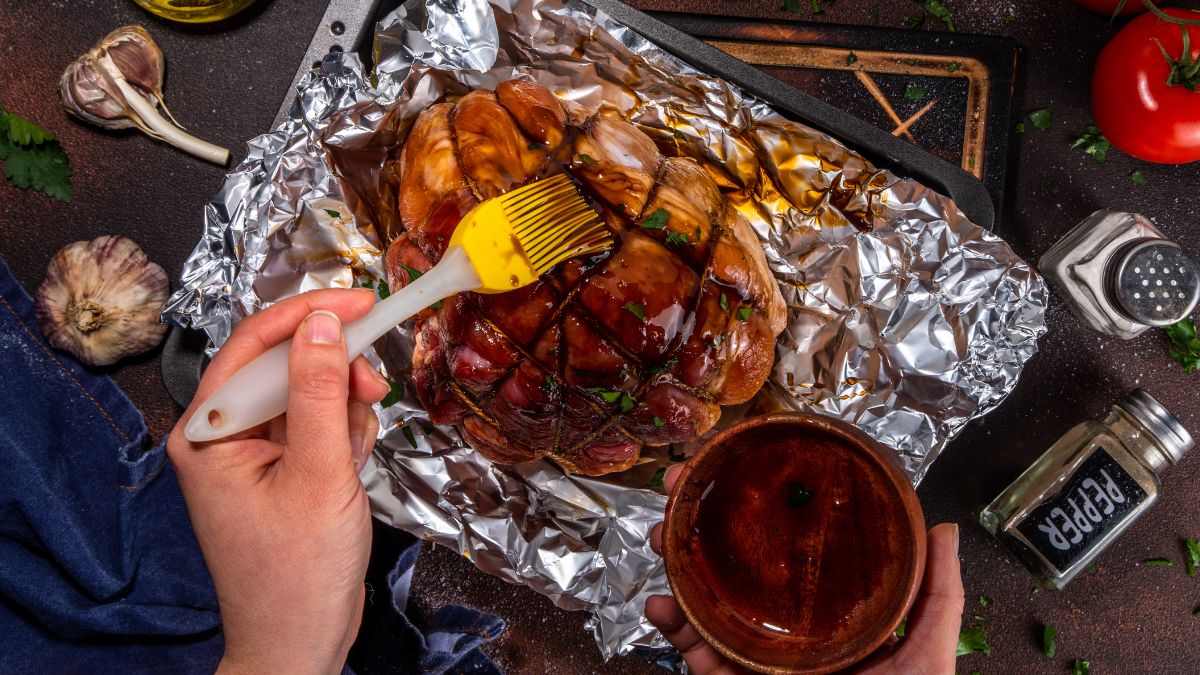What Is Dry Glaze Packet That Comes With Ham & How to Use It?

Ham is among my favorite meat varieties for big gatherings, so I always make an extra effort to achieve the perfect relish. The meat alone has a savory and salty taste, plus it’s prone to drying out, which may make it chewy and dense. To avoid these things, I have researched numerous preparation methods to boost natural flavors and keep the meat tender. Spices, coatings, and special additions are what make ham go from “meh” to mouth-watering! Usually, there is a spice blend you get with the ham named dry glaze packet. But what is a dry glaze packet, and how do you use it?
A dry glaze packet that comes with ham is a mixture of spices, herbs, natural flavorings, and a few kinds of sugar that jack up the final taste. What’s more, the sugars caramelize while cooking and create a perfect golden glaze. Your task is just to dissolve it in warm water and coat the ham in a glossy layer.
I had my fair share of making a few kinds of roast, and one thing is always crucial – fine coating. I made it from scratch and used dry glaze packets, so I have to say – it’s easier when someone does half of the job for you. ☺ Let’s see what’s in the dry glaze packet and how to use it, so you can decide if you’ll ditch it or not!
What Is in Dry Glaze Packet?
Ingredients used in dry glaze packets vary from brand to brand, so I can’t tell you the exact content of each one. Still, they have mostly the same ingredients – sugary components, thickeners, and spices. The main difference is in the spice blend, actually, as some brands keep it simple, while some add unusual flavorings.
Sweeteners are a big deal here; that’s why producers use various kinds altogether, and here’s the usual mix – sugar, fructose, honey powder, and dextrose. They all influence taste, of course, bringing the sweet relish to the table, which enhances and enriches the savory taste of the meat. On the other side, sugar and dextrose are there for the gloss, as well.
They are responsible for caramelization and forming a signature golden-brown crust on top, along with a glazing effect. They create a glossy coating that looks unmistakably appetizing! Dextrose also helps retain moisture preventing ham from drying out and keeping it juicy and tender.
What’s more, it thickens the glaze and makes it stick easier when coating the meat. Fructose is sweeter than regular sugar and will undoubtedly, skyrocket the sugary relish. That’s why it isn’t a staple ingredient in the dry glaze packets, but its presence varies from brand to brand.
Honey powder glaze, or dehydrated honey, isn’t always in the recipe, but when it is, the taste is divine! It is a handy option to avoid using liquid, sticky honey, but still save the special distinct, floral-flavored glaze. My favorite thing about it is that it has a longer shelf life than regular honey, and it’s pretty practical.
When reading the label, you’ll notice the “natural flavorings” on the list, as well. This is a pretty broad term, and it can include a variety of plant-derived ingredients which enhance the taste and aroma of the glaze. This one, too, depends on the brand, but it often comes from orange or lemon zest, cinnamon, cloves, mustard, allspice, ginger, thyme, rosemary, and many more.
The main purpose of adding natural flavorings to the glaze is to add depth to the flavor and a more complex taste profile. Speaking of spices, you will find at least a few of them in the packet, but they have various proportions combinations to create a balanced bite. Besides those listed above, paprika and black pepper are two staples to add some heat to contrast the sweetness.
What to Use It for & Should You Use It?

The glaze has three roles: flavor, looks, and succulency. It adds a sweet touch by caramelizing the top and creating a crusty outer layer. In the roasting process, the glaze drips deep into the meat allowing flavors to penetrate the meat to create a full-flavored mouthful.
It catapults the final taste because of the spices and flavorings combination, you just need to find the one you like the most. I mentioned it above and will mention it again, a dry glaze packet is responsible for a glossy golden crust that will make your ham look like it came straight from a commercial. The coating will make your life easier by keeping the wanted juiciness even without a steam bath.
If you want luscious, glossy meat on the table fresh from the oven, then using dry glaze is a convenient option, and I love to do it because it makes everything easier and more delicious. On the contrary, if you fancy a more natural relish of the ham, skip it!
A dry glaze packet always contains loads of sugar that contribute to a sweet final taste. It is an impeccable contrast to ham unless you hate the specific sweet-salty combination and want something more subtle. You can always add sugar or honey alone, but the glaze packet is more intense because of fructose and dextrose.
Also, you can rarely achieve a perfect glossy, crusty, and golden glaze without a pre-made glaze blend. The 100% homemade ham is mouth-watering, but layers of sugar components are what creates the caramelly finish. Covering it in honey is a bit messy, but the glaze is a real show-stopper, as well.
How to Use Dry Glaze Mix for Ham?
Preparing a dry glaze mix has one simple step – dissolving it in water. You only need to simmer it lightly until all sugar is melted and leave it to cool a bit until it thickens. Prepare it according to the instructions on the packaging, as sometimes you’ll need to add oil along with water.
You’re seeking silky smooth consistency that is easy to spread – not too thick or too runny, something like crepe batter. Brush it before or during the cooking process, depending on what ham and glaze blend you’re dealing with. Hence, you’ll have the tastiest crunch!
In case you don’t want to use any water, you’re going to need a blow torch. For more details, here’s a video for you!
Do you think ham needs to be dry-glazed? I would love to hear your opinion in the comments below!
